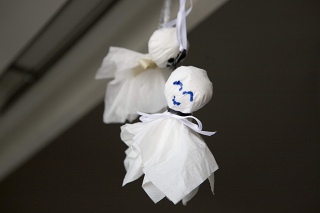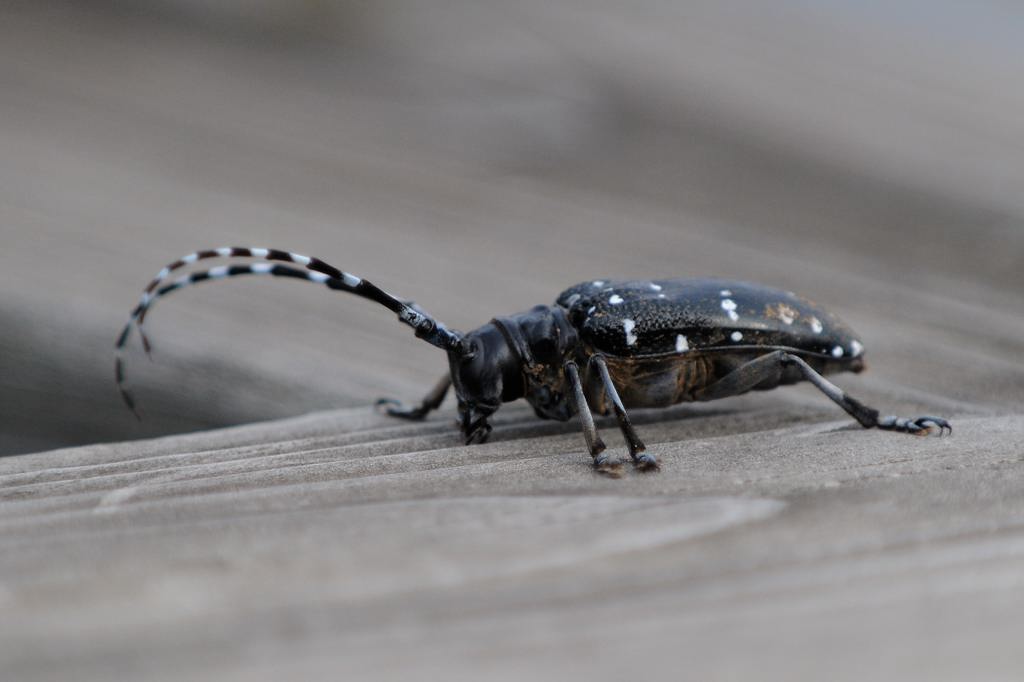Today our school had it's third and final summer camp excursion. We went bug hunting at Mt. Daisen with, yet again, Mr. Tahara, one of the very friendly and knowledgeable staff at Mori no Kuni camping resort area. In the morning, we went hunting for cicadas and other bugs I caught a frog, the giant oniyanma オニヤンマ dragonfly known as the banded dragonfly, the largest dragonfly in Japan, as long as my hand. And the scary looking kamikii mushi カミキリムシ or Asian long horned beetle. Other kids caught lots of cicadas, grasshoppers, crickets, prayng mantises, an one girl caught a small kuwagata クワガタ or stag beetle, highly prized among Japanese kids. I eventually let the oniyanma dragonfly go, but kept the frog and beetle. The kamikiri mushi is a rather large beetle, black with white spots, long antenna, and a wasp like head with scissor like jaws. Despite it's appearance, it's harmless and feeds on trees.
After a lunch of yakisoba, fried noodles, we went to the river to hunt for fish or other creatures. We all had a grand time. Here are good pics of the bugs, not mine:
 雪の宿, "yuki no yado" is probably my favorite Japanese rice cracker. Yuki means snow and yado means cottage or house. The image is a snow covered house. It's a salty "salada" senbei cracker covered with a thin, hard, white frosting on one side. It's salty and delicious with a hint of sweetness. A perfect balance. There is also a brown sugar version that is great.
雪の宿, "yuki no yado" is probably my favorite Japanese rice cracker. Yuki means snow and yado means cottage or house. The image is a snow covered house. It's a salty "salada" senbei cracker covered with a thin, hard, white frosting on one side. It's salty and delicious with a hint of sweetness. A perfect balance. There is also a brown sugar version that is great. 











































